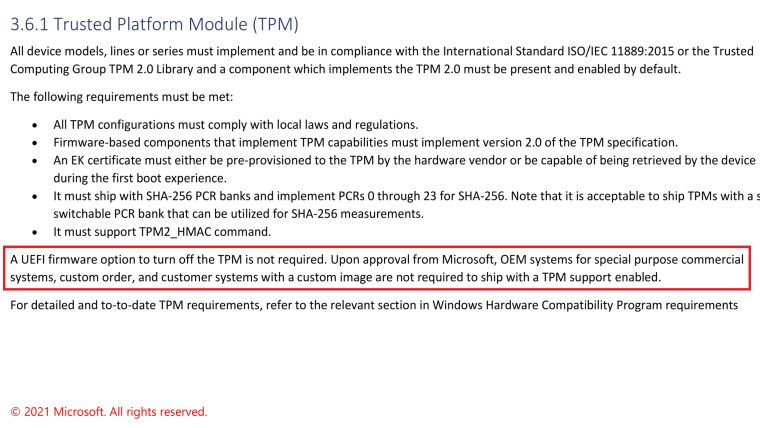

Of course, people often keep their gaming desktops for several years, while mostly just upgrading the graphics card. You'll also want to check the lists of AMD (opens in new tab) and Intel (opens in new tab) CPUs that are compatible with Windows 11. That means that, over the last four years, plenty of devices and components have been released that should, in theory, support this new Windows 11 requirement. In 2016, Microsoft wrote that (opens in new tab) "all new device models, lines or series (or if you are updating the hardware configuration of an existing model, line or series with a major update, such as CPU, graphic cards) must implement and enable by default TPM 2.0." You may also need to check your your boot drive is in GUID Partition Table format (GPT) rather than Master Boot Record (MBR) for similar reasons.

If you have an older piece of hardware in your system that doesn't work with UEFI and requires CSM, it may not work. It's unclear yet why that is, and which other settings or specifications may causing issues. I am, however, seeing a number of people who have tried it and aren't seeing the same results. For added security Enable the Secure Boot feature." The Legacy and Compatibility Support Module (CSM) options must be disabled. Devices with TPM 2.0 must have their BIOS mode configured as Native UEFI only. Do note that in a 2018 document, Microsoft wrote in a security document that (opens in new tab) "TPM 2.0 is not supported in Legacy and CSM Modes of the BIOS. So, if you don't have a hardware TPM chip, there may be an option to enable fTPM. (Image credit: Tom's Hardware Screenshot)


 0 kommentar(er)
0 kommentar(er)
